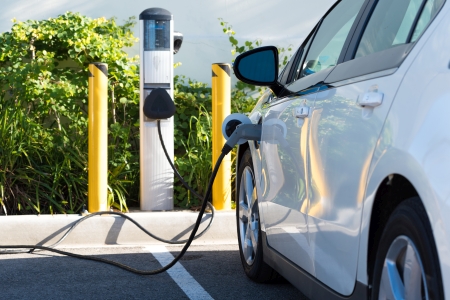1…1…1…3…1…1…
I’m sitting here at the home office keeping score.
I’m not watching a match, or any sort of sporting event. Instead I’m looking out the window and adding up cars during the morning commute.
To be precise, I’m counting how many people are inside the cars that pass by.
The vast majority are carrying a single person.
If you think about it, this is quite inefficient.
It’s quite a waste of energy and resources. You use your vehicle every day to take you to work…but you don’t produce anything. Instead, each car consumes a vast amount of energy and delivers exhaust fumes to take only one person to work.
But, what if you could produce energy as you drive?
Let me explain.
Major change in the energy industry
The energy industry is going through a massive change.
Consumers are increasingly adopting electric vehicles.
Yet, while you may be hearing quite a lot of noise about Tesla and electric vehicles, let me tell you, they are still not that common.
EV-Volumes estimate that by the end of 2018 there were about 5.4 million plug-ins on the road, a 64% increase from 2017. Yet that only amounts to a grand total of 0.4% of all the light vehicles on the road.
Most of us aren’t driving electric vehicles…yet.
But that number is set to increase.
There are a lot of incentives for consumers to make the switch.
Of course, there is the environmental issue. But there are also financial incentives.
Battery costs are dropping…which is making the electric vehicles cheaper.
They are also mechanically simpler, which means they will break down less and they are cheaper to maintain.
And governments are driving the push to change by giving financial incentives, changing legislation and increasing infrastructure. [openx slug=inpost]
The US International Energy Agency expects that the number of electric cars on the roads will reach 125 million by 2030…which presents us with an incredible opportunity to change the way we power our transport.
But, of course, there are also some hurdles.
While charging a gas guzzler is no problem, charging an electric car is a whole different ball game. It’s not as easy as you may think.
For one, there aren’t that many charging stations yet.
And we will need more in the future. This from Wired :
‘Americans have bought only about a million EVs to date. But many more are coming. The global auto industry is poised to roll more than 100 electrified car, truck, and crossover models onto showroom floors by 2022. Collectively, they’ll sell in the millions. That means the where question—where the electric vehicle owners will live, where they’ll drive, and most of all, where they’ll charge—is about to become much more important.[…]
‘For the public and private entities building out that infrastructure, knowing where to put charging stations is essential. According to the analysis [a report from International Council on Clean Transportation], most locales will need to up the number of plug-in places they build each year by 20 percent to keep up with demand. Even in California metros, where utilities and private companies already have plans to build more than 26,000 new stations by 2025, the analysis finds that the state may come up almost 41,500 chargers short.’
The most usual way to charge an electric vehicle is with a charger at home. Which means that people living in apartments may not have access to this.
And, electric vehicles can take a long time to charge.
According to pod-point , charging an electric car can take anywhere from 30 minutes to up to 12 hours depending on the size of the battery and the charger’s speed. Fast stations will take about 30 minutes to charge, which admittedly is quite long when you compare it to the 5–10 minutes it takes to charge an internal combustion energy (ICE) vehicle.
We will need faster charge times.
How to charge as you drive
But, as we said, what if we could charge as we drive?
Then there is no need to stop to recharge for hours…or even for building recharging stations.
China is already working on something like this.
Qilu transportation is looking at completely transforming a 1km of road in the eastern city of Jinan to an ‘intelligent highway’. 45,000 vehicles pass through that section of road every day.
As Bloomberg reported:
‘The road to China’s autonomous-driving future is paved with solar panels, mapping sensors and electric-battery rechargers as the nation tests an “intelligent highway” that could speed the transformation of the global transportation industry.[…]
‘Yet Qilu Transportation wants to do more than supply juice to the grid: it wants the road to be just as smart as the vehicles of the future. The government says 10 percent of all cars should be fully self-driving by 2030, and Qilu considers that an opportunity to deliver better traffic updates, more accurate mapping and on-the-go recharging of electric-vehicle batteries—all from the ground up.’
A smart road that powers the highway’s lights, the homes around it and the electric cars that pass through it.
How are they planning on charging the cars as they pass by? Through wireless charging.
A couple of problems with this.
First, this could be quite an expensive undertaking. Qilu is only looking at applying this to 1km of road so far. It will take a lot of money, materials and wires to apply the changes to the entire current infrastructure.
Second, wireless charging electric cars don’t exist yet…
But, you get the idea…instead of building more infrastructure to cater both electric and ICE cars as we make the switch, we could use our roads to charge as we drive, which could be much more efficient.
Stay tuned for more…
Best,
Selva Freigedo
